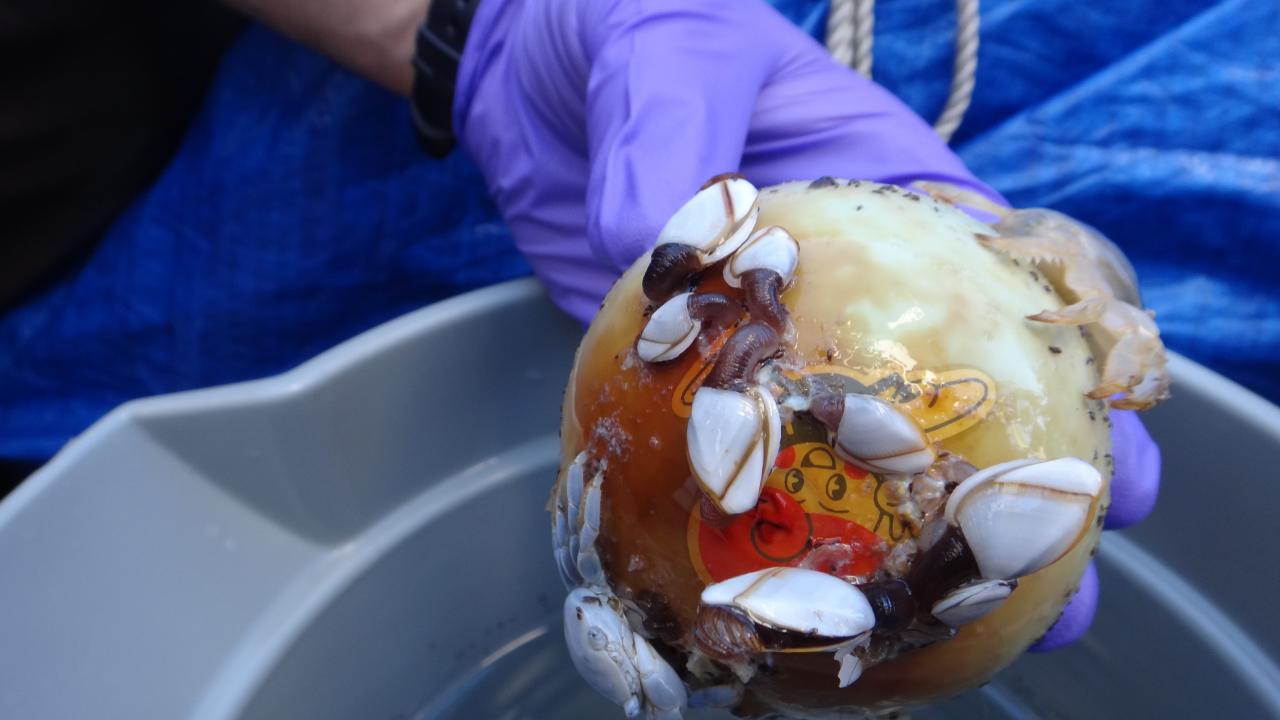Quick Summary
- Ocean crabs live in monogamous pairs under sea turtle shells
- 2012 survey found many crabs also living on floating plastic debris
- Crabs on flotsam more numerous, not monogamous
The oceanic crab Planes minutus lives far from land. The crabs find a refuge between the upper shell and tail of loggerhead sea turtles, where they are nearly always found as a monogamous pair, one male and one female. But floating plastic trash in the ocean provides many new places for these crabs to live — and more space opens up many different ways for crabs to live and find partners.
“What’s really interesting is that the morphology of sea turtles seems to promote a particular mating system for the crabs,” said Mike Gil, a postdoctoral researcher at the University of California, Davis. Gil is co-author on the study, published Sept. 21 in the journal Biology Letters, with Joseph Pfaller of the University of Florida.
In 2012 Gil, then a graduate student at the University of Florida, joined a research cruise through the North Pacific Subtropical Gyre. As the current sweeps around the Pacific north of the equator, it collects floating trash into what is sometimes called the “North Pacific Garbage Patch.” The researchers collected pieces of floating plastic trash and looked at the communities of animals living on them, including oceanic crabs.
Oceanic crabs are a rafting species, Gil said. They are only found on floating objects, either living or dead. Crab larvae disperse through the ocean as plankton, but once they settle on a floating object they are essentially stuck on an island with a very limited ability to leave, as these crabs are poor swimmers.
Once on their island, they need a refuge in which to hide from predators and shelter from waves. This can be under the shell of a turtle, or among barnacles on a piece of drifting plastic. Venturing out, the crabs will forage on pretty much any organic material they can find on their island.
The space between a turtle’s shell and its tail is big enough for two crabs to shelter from waves and predators, and small enough for them to defend against intruders. In ecology-speak, that means the crabs can “monopolize the resource.” From this refuge, the crabs can roam all over the turtle, collecting food.
When Gil and Pfaller pulled plastic from the ocean they found many more crabs, of both sexes and all ages, on the flotsam. Floating pieces of plastic such as old fishing buoys collect barnacles, and those “forests” of barnacles can provide space for many more crabs to live, and to live in different ways.
“Pieces of plastic garbage that offer a greater refuge area likely promote mating strategies that are less exclusive, such as polygamy and polygynandry, in the same species,” Gil said. “The crabs can reap the benefits of promiscuity without the risks of moving to a new mobile island home.”
It’s not quite an island paradise, though. Monogamous crabs on turtles are generally in better condition, while plastic flotsam crabs often have missing limbs, evidence of violent encounters while competing for space, food, mates or all three. Still, the benefits of being able to produce more baby crabs, by more partners, generally seem to outweigh the added cost of competition.
Monogamy becomes a better bet when the refuge area, on a turtle or a piece of plastic, is small enough for a pair of crabs to defend it and therefore monopolize the whole “island.”
The project was part of the Plastics @SEA North Pacific Expedition, operated by the Sea Education Association, Woods Hole, Massachusetts.
Media Resources
Andy Fell, UC Davis News and Media Relations, 530-752-4533, ahfell@ucdavis.edu
Mike Gil, UC Davis Environmental Science and Policy, 832-377-6445, mikegil@sciall.org
